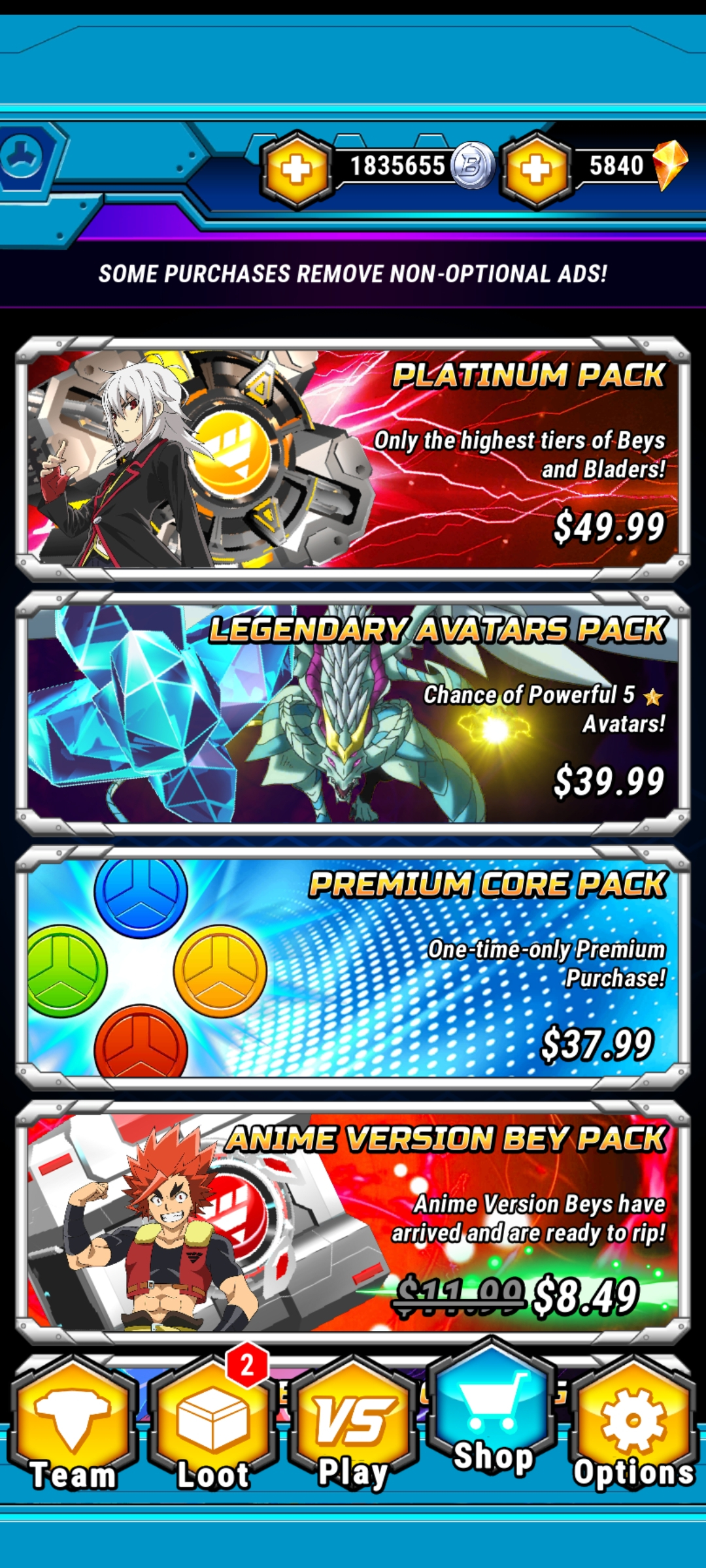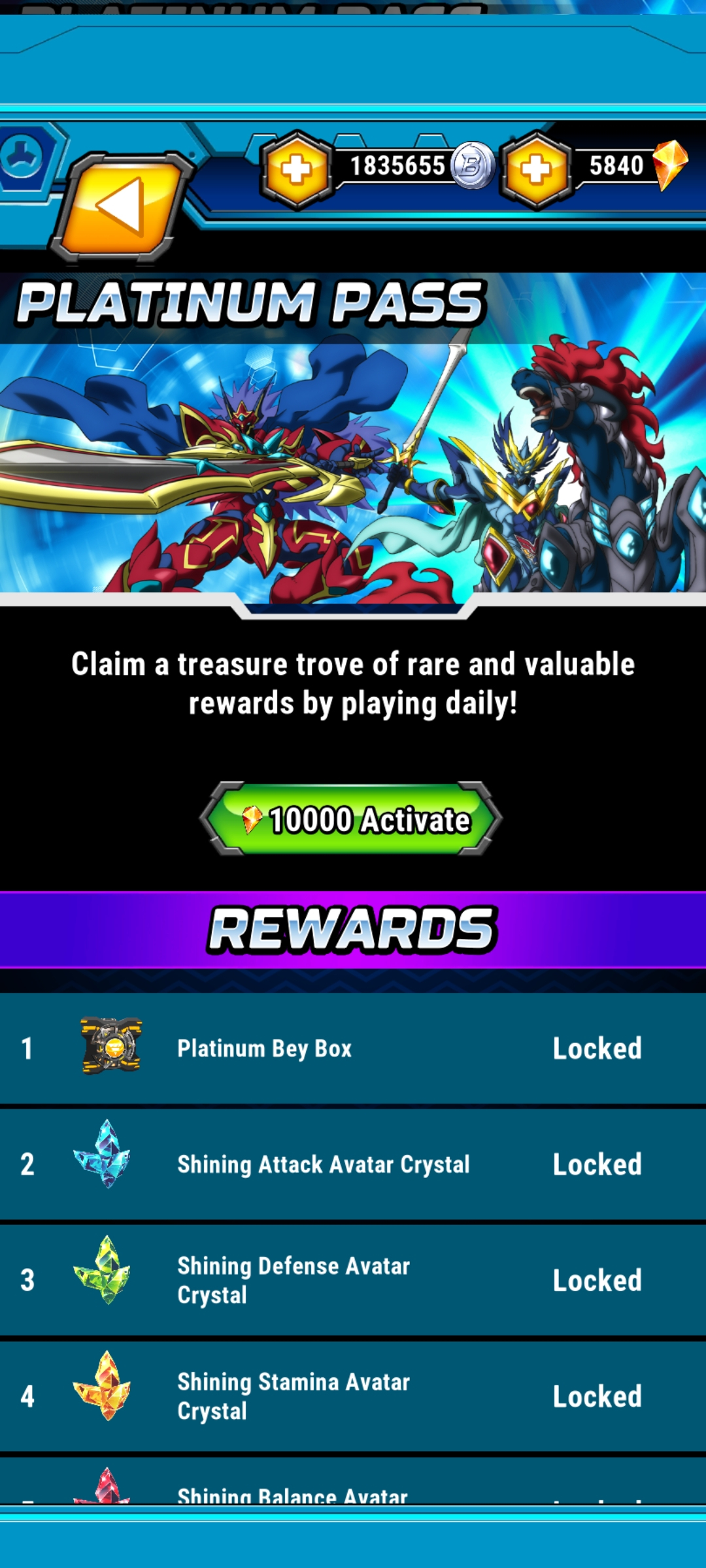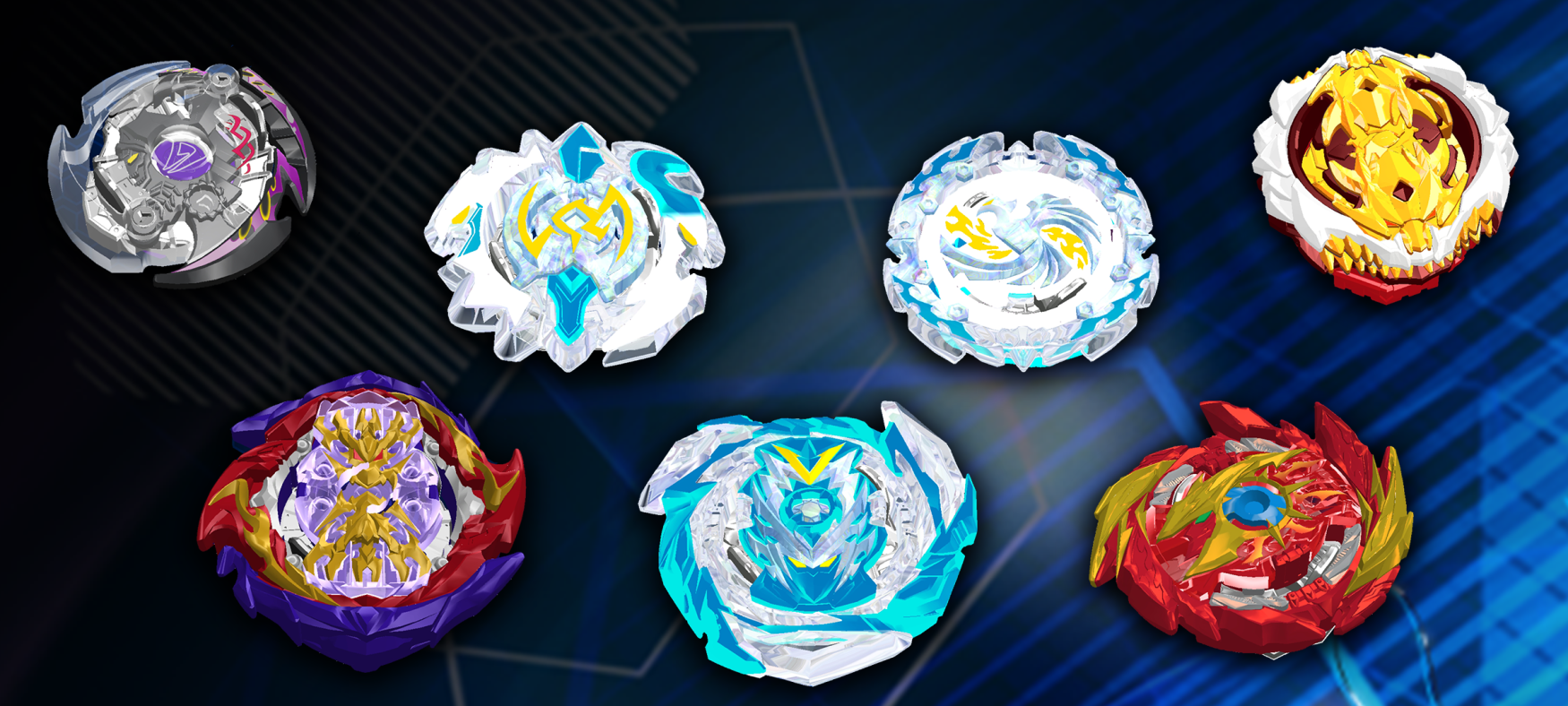
BEYBLADE BURST RIVALS
Company
Epic Story Interactive
Role
Design Lead
Platforms
iOS, Android
Genres
Puzzle, PvP, Gacha, Licensed IP
Tech
Unity, C#
Design Skills
Product, Economy, Live-Ops, Leadership
I joined the Beyblade Burst Rivals team in the middle of their push towards an official release in Japan. During this time, I worked with the license holders to ensure that the Japanese localization was correctly executed, and that brand standards were perfect for the October 2021 release.
After the Japan launch, I turned my aim towards establishing an updated roadmap for the next year, covering content updates, monetization improvement tests, and planning for design adjustments and additions to enhance the game economy and player motivations.
Throughout this time, I was proud to mentor a fantastic junior designer on the project, and worked with other senior designers to set up direction for the company’s design department.
Product Design
The main product goal was to grow the game into a sustainable, evergreen product for ESI. We were just wrapping up the Beyblade Burst Season 4 content in-game while Season 6 of the anime and physical products had just started to release. We were just about to release in Japan and had plenty of content and runway to work with! What I needed to figure out was how we stabilize the game economy, grow our monetization, and provide strong, longer-term incentives to keep our players going.
- I planned out the 2021-2022 roadmap for content with our project manager, with room for longer-term game improvements between content updates. We also made room for short monetization experiments to gauge our progress on improving our revenue.
- Worked with License Holders for IP consistency and content approval over 6 major updates between October 2021 and May 2022.
- I began investigating and designing methodologies for improving our economy.
- Worked with our data scientist to plan out low-cost, low-effort, high potential improvement experiments to boost our sustainability in the short term. These were executed and measured on a per-release basis to avoid too many additional variables.
Economy Design
Economy stabilization and update design was a blast for this project. The gameplay was already solid, fun, and engaging. The core problems that arose after my investigation were an excess of hard currency (HC) for seasoned players, and nothing exciting to work towards. Most players could achieve a decently competitive set of Beys, Bladers, and Avatars within a month of dedicated play time. There wasn’t too much further up to go from there aside from doubling down on optimal PvP strategies.
-
My first experiment for improving our hard currency economy was to add in some high-value, time-limited, HC only rewards in the shop.
-
Long-term players could buy one right away and drain off excess HC, where newer players could still achieve a purchase within the timeframe by completing their daily and weekly challenges.
-
The experiment was successful in reducing long-term player HC amounts to a more manageable level for the economy.
-
As a bonus, the cost of these limited items was near our cheat detection levels, so we unintentionally weeded out a ton of cheaters generating currency at and above that threshold. Win-Win!
-
-
To further increase HC spend, we updated the rewards from our various reward Passes.
-
This resulted in an increase in Pass purchases! Another win!
-
-
For short term gameplay balance, we added skills on all the new content that ran counter to a lot of the main Player-Versus-Player strategies to try and shake up the competitive balance.
-
This succeeded in increasing the variation of Beys, Bladers, and Avatars players were using in all levels of the leaderboard. Not a major shakeup, but enough to start taming the overall balance.
-
-
As a longer-term economy solution, I designed a new rank level that would cost the usual resources at a higher rate, but also cost a new, limited availability resource Core.
-
By limiting the number of new Cores players could get on a monthly basis, their choice on what they upgrade became substantial! Players that wanted to upgrade a full deck of Beys, Bladers, and Avatars would need 9 Cores, which could take ½ a year to gather for a dedicated full-time player.
-
To make this upgrade feel extra important, each type of asset (Blader, Bey, or Avatar) would get a unique visual change and stat boost.
-
Getting the currency and Cores needed to make a new upgrade would allow us to give players more short-term, medium-term, and long-term goals to achieve, and potentially improve the long-term retention of our game.
-
-
Our short-term, low-cost monetization experiments included the following:
-
Limited Offer HC sinks (as outlined above).
-
Adding animated notification pips to the shop and unviewed packs.
-
This gave us a slight boost overall in new pack purchases.
-
-
Pack organization adjustments. Higher value packs were moved to the top of our list, and we weeded out old pack banners that weren’t of value.
-
This gave us a slight boost overall, with a stronger boost to our best-selling packs.
-
-
Pack presentation adjustments. We added things like % Off, and Best Deal tags to appropriate packs.
-
This also gave us a slight boost to the update packs! Every little bit counts.
-
-

Shop Pack reordering based on popularity. Increased overall pack purchases!

Platinum Pass content updated to be more valuable and increase HC spend.
Live-Ops Content Updates
A good bulk of the work from my time on BBR was planning, coordinating, and implementing our Live-Ops content with our artist and junior designer. As the content required a lot of runway to get through license holder review, we had to be on our toes and make sure things were planned well ahead of time to hit our release dates.
- Completed localization for Japan: home of the Beyblade franchise!
- Added over 50 new Beys, Bladers, and Avatars for players to collect. Content covered the end of Beyblade Burst Season 4, the launch of Season 5 content, and dozens of custom form variants of existing Beys. Each individual piece of content required extensive license holder review before release.
- Designed, implemented, and got license holder approval for major Winter/Christmas, Lunar New Year, and Cherry Blossom viewing season events. I also planned out content for Summer and Fall releases.
- Added special Challenge Battles to the new single-player tournaments that included bespoke opponent behaviours and special attacks that need to be planned for. This provided a more immersive experience for long-time players that usually just plowed through new content.
- Our Discord community was especially buzzing with player strategies around these releases.

Seven of the many new Beys released during 2021/2022.
Design Leadership
I started out with one direct report on BBR: a delightful junior designer with a ton of potential. With 1:1s and some design and soft skill feedback, he grew from a junior to a confident intermediate designer in his own right.
I also worked with the rest of the more senior designers at the company to help shape the overall design direction for the studio and presented some of my career learnings to help with that direction foundation.
- Worked with a junior designer direct report, mentored him, and ran weekly 1:1 meetings for project and career development.
- Met with other senior designers to define direction for design department for the studio and consolidate the designer job growth matrix.
- Created and presented a Design and Product Pillar presentation to cover the why’s, how’s, and when’s of game pillars.


